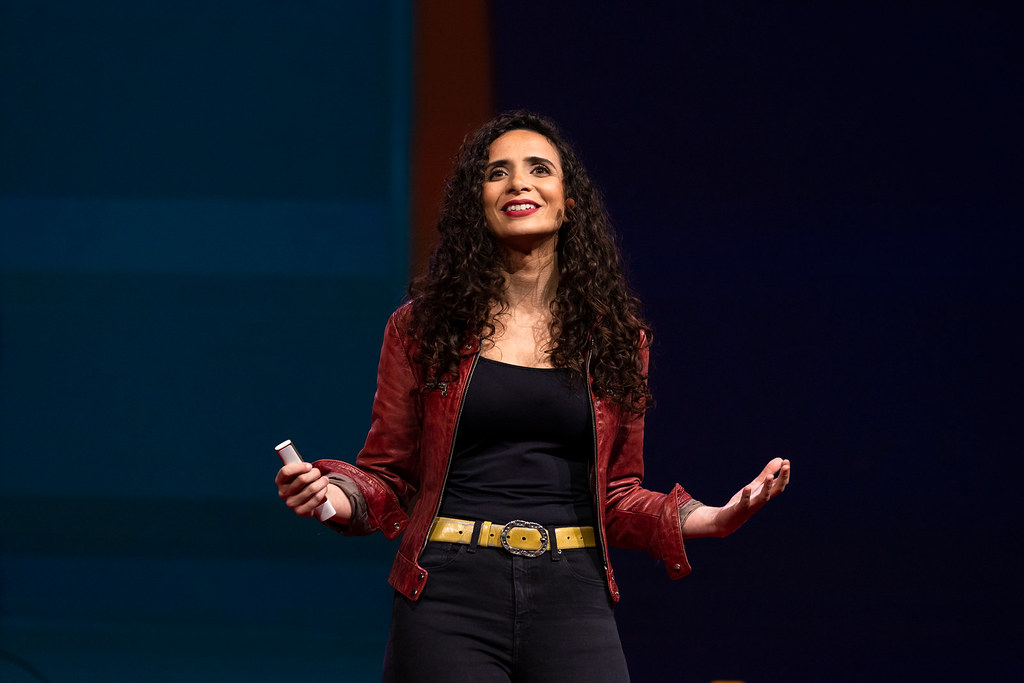In a dimly lit Komedia in the North Laine, Ella Al-Shamahi starts her live show off-stage with an enticing prologue, immediately drawing the audience into of humanity’s most profound stories. What follows is a marvellous lecture on the movement of humans across the globe, alongside an exploration of her life from a creationist to a renowned anthropologist and presenter.
Born into a muslim Yemeni family in Birmingham, Al-Shamahi was raised a devout creationist, initially pursuing an education in human sciences with the grand intent of disproving evolution, and other theories that clashed with the dogmatic young-earth ideology she had been raised on. However, unsurprisingly, Ella did not manage this. During the show, she recalls breaking down in tears after the realisation that her worldview had become fundamentally opposed to that of her family.
The first segment of the show chronicles the epic journey that the first group of Homo sapiens migrators took out of Africa 60,000 years ago, how they traversed from the Horn of Africa into the Middle East, and onwards across the globe. This group, of a relatively small 2,000-10,000, is what led to the modern human’s population across the globe.
One of the production’s most interesting discussions centers around an interpretation of Neanderthal cave art, including a handprint that Ella had taken while lodged horizontally into a tight cave passage. Many theories for the meaning of this cave art circulate the paleoanthropological world, some claim they were abstract early versions of art, some claim they were warning symbols, some even claim they could be some form of religious symbolism.
Ella also discusses a number of different types of archaic humans from the ancient world, and the genetic diversity of these species and subspecies. She spends some time introducing the audience to the “Dragon-Man” Denisovans – a human species that lived in East Asia, which interbred with many different modern humans across Asia and Oceania, including Tibetan Homo sapiens, giving many Tibetans a significant genetic advantage in ease of living at high altitudes. She also emphasises that a large proportion of modern humans carry some Neanderthal DNA, meaning one of your distant ancestors was literally half Homo sapiens, half Neanderthal.
Al-Shamahi also covers her time working on ‘Ned’ – a disabled Neanderthal living in a cave in modern-day Iraq. Notably she worked on the project with Andy Serkis (famous for many computer-generated motion capture roles including Gollum), who portrayed a reconstructed Ned, who had only one arm and one working eye, and yet was aided and kept alive by his Neanderthal cave-dwelling community, showing an evidence for compassion among the species, seemingly in contradiction from any behaviour based on evolutionary advantage.
Throughout, Al-Shamahi weaves in her observations on modern humanity’s relationship with tribalism and community. She explores biological hardwiring for ‘tribalist’ views and the challenges this presents in our contemporary world. Drawing from her experience of leaving her religious “tribe,” Ella sympathizes with the degradation of tight-knit communities in our times, claiming that we are still essentially “cave people with Instagram.”
The show also explores why it was that Homo sapiens managed to survive while all other species perished. Ella showes that it was likely due to larger communities which enabled for specialisation within the tribe, as well as cultural advancement, and what Al-Shamahi descibes as “mad risk-taking” – think crossing seas on makeshift rafts.
To conclude, Ella passionately asks for us to humanise those we disagree with – something she believes is neglected in modern discourse. Asking the audience that we “sit down and have coffee” with our idealogical opponents reflects a wisdom gained from a deep understanding of the human species, as well as profound worldview change.

